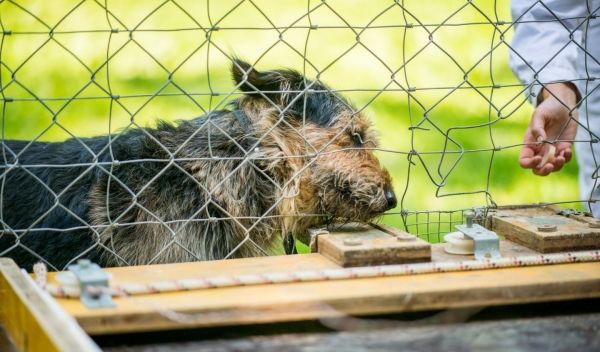Human social life would be unthinkable without cooperation. The frequency and complexity with which humans cooperate with each other are extraordinary, if not unique. To better understand the evolution of this outstanding human skill, researchers have proposed dogs (Canis familiaris) as a good model of human cooperation.
The wolf inside dogs makes the difference
A recent study by Vetmeduni Vienna, published in the journal Scientific Reports, shows that the ability to work with people lies not so much within dogs themselves but in the “wolf within the dog” – that is to say, in very specific behavioural characteristics that dogs share with wolves. The study tested the extent to which dogs and grey wolves collaborate with humans in order to solve certain tasks. The findings show that both dogs and wolves cooperate intensively with humans and are equally successful, although the animals attain their goals in different ways.
Wolves show more initiative
Especially in one point the two closely related animals show significantly different forms of behaviour. In their cooperation with human partners, dogs follow the behaviour of the humans while wolves lead the interaction: they are more independent. Study director Friederike Range from the Konrad Lorenz Institute at Vetmeduni Vienna says, “The detailed analysis of the cooperative interactions revealed interesting differences between wolves and dogs. It shows that, while wolves tend to initiate behaviour and take the lead, dogs are more likely to wait and see what the human partner does and follow that behaviour.”
Read more at University of Veterinary Medicine - Vienna
Image: Dogs follow us if they cooperate with humans. (Credit: Friederike Range/Vetmeduni Vienna)


